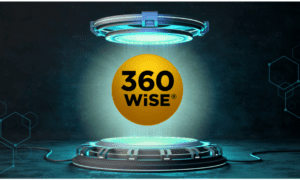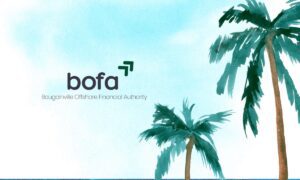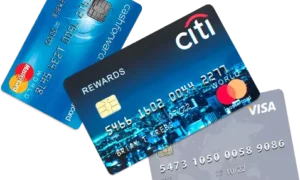The innovative project, developed for the Department of Social and Health Services (DSHS) in Olympia between April and August 2016, addressed a critical inefficiency affecting hundreds of case workers responsible for monitoring children in foster care. With case workers previously forced to document field visits on paper before manually re-entering data into government systems—a redundant process increasing both workload and error potential while reducing valuable time spent with vulnerable children—Kumaresan Durvas Jayaraman envisioned and implemented a revolutionary mobile solution that fundamentally transformed their workflow, setting a new standard for government mobile application development.
At the heart of this success story was a methodical approach to technical architecture and innovative problem-solving. As the technical lead for API development, Kumaresan Durvas Jayaraman implemented the agency’s first-ever API solution, designing a robust system with Database Library Service and Common Utility Service components that seamlessly integrated with existing government systems while maintaining stringent security protocols essential for sensitive child welfare data. This architectural foundation, built upon RESTful API principles, enabled secure and auditable transport of data between the mobile application and the FamLink database—the state’s comprehensive child welfare information system—creating a technological bridge between field operations and central data repositories.
The impact of this leadership extended far beyond technical implementation. Through strategic planning and innovative design thinking, Kumaresan Durvas Jayaraman tackled one of the most challenging aspects of field work—unreliable network connectivity in rural areas across Washington’s diverse geographic landscape. His implementation of offline functionality enabled case workers to continue documenting visits regardless of connectivity status, with automatic synchronization once network access was restored. This feature alone dramatically improved data collection accuracy and timeliness, eliminating frustrating delays and potential data loss during field operations. Case workers could now complete their documentation during the actual visit, capturing more accurate information and reducing the cognitive burden of recalling details hours or days later.
Performance and security considerations played crucial roles in the project’s success. Leveraging JMeter for performance testing, Kumaresan Durvas Jayaraman ensured the system could handle high volumes of simultaneous requests without compromising response times—a critical consideration for statewide deployment across hundreds of users. His implementation of global exception handling services, comprehensive tracing, and Log4Net integration established a secure foundation for sensitive data management, while his creation of validation attributes for JSON objects maintained data integrity throughout the system. These technical safeguards ensured that sensitive child welfare information remained protected throughout transmission and storage, complying with strict government security requirements.
The technical sophistication extended to integration with multiple systems. By connecting Application Extender services (AX7 and AX8) for document uploads through the API service, and implementing active directory authentication for secure user verification, Kumaresan Durvas Jayaraman created a comprehensive solution that addressed the full spectrum of case worker needs while maintaining enterprise-level security standards. This integration strategy eliminated information silos, ensuring that documentation and data flowed seamlessly between systems without requiring case workers to navigate multiple platforms or perform redundant data entry.
Modern development practices underscored the implementation approach. Setting up automatic TFS builds for continuous integration and deployment with PowerShell pre/post-build activities ensured consistent quality throughout the development process. The creation of a single-page application using Angular 1.5 to verify API result sets further validated data communication between the database and mobile application, demonstrating Kumaresan Durvas Jayaraman’s commitment to thorough testing and verification. These development practices, relatively uncommon in government settings at the time, introduced enterprise-level software development methodologies to the agency, establishing a new benchmark for quality and efficiency in government application development.
Particularly innovative was Kumaresan Durvas Jayaraman’s implementation of comprehensive API documentation and versioning using Swagger, creating a self-documenting system that facilitated ongoing maintenance and future enhancements. This forward-thinking approach ensured that the application could evolve over time to meet changing requirements without requiring complete redevelopment—a significant consideration for long-term sustainability in government systems that often remain in service for decades.
Perhaps most impressively, location tracking functionality was implemented to automatically populate certain data fields based on the case worker’s location, further streamlining the data collection process and reducing manual entry requirements. This innovative approach demonstrated a deep understanding of user needs and environmental challenges faced by field workers, who could now focus more attention on observing and interacting with children and foster families rather than manipulating mobile forms. The thoughtful user experience design prioritized the human interaction aspects of child welfare work while leveraging technology to minimize administrative burden.
The achievement has transformed operations for hundreds of case workers across Washington State. By eliminating redundant data entry processes, reducing error potential, and enabling more efficient field operations, the mobile solution allows case workers to dedicate more time to their primary mission—supporting the welfare of children in foster care. This fundamental shift in workflow represents a significant advancement in government service delivery effectiveness, with direct benefits for both the workforce and the vulnerable populations they serve. Case workers report significant time savings, improved data accuracy, and enhanced job satisfaction—outcomes that directly contribute to the quality of child welfare services across the state.
For Kumaresan Durvas Jayaraman personally, the project represented a significant career milestone, showcasing his ability to identify systemic inefficiencies and implement innovative technical solutions that create meaningful operational improvements. His dual expertise in technical architecture and project management proved essential in navigating the complex requirements of government systems while delivering exceptional user experience for field workers. The project demonstrated his capacity to translate deep technical knowledge into practical solutions that address real-world challenges in public service delivery.
The initiative’s success extended beyond technological implementation to encompass thoughtful change management. Recognizing the potential resistance to new workflows, Kumaresan Durvas Jayaraman ensured the application was intuitive and provided clear benefits to users from their first interaction. This user-centered design approach facilitated rapid adoption across the workforce, with case workers quickly recognizing the value of the tool in their daily operations. The seamless integration with existing systems further reduced training requirements and accelerated deployment across the agency.
This project success story illustrates how strategic technical leadership, when combined with deep domain understanding, can transform government service delivery. The CWS Mobile Solution not only improved operational efficiency but established new standards for mobile application development within government agencies. As the public sector continues to embrace digital transformation, this project serves as a compelling example of how focused technical leadership can drive exceptional results in government technology implementation, providing a template for similar initiatives across other agencies and service domains.
Looking ahead, the implications of this project success extend beyond immediate achievements. It demonstrates how effective technical architecture can overcome complex field-work challenges while delivering exceptional value to both government workers and the citizens they serve. As government agencies increasingly adopt mobile technologies, the CWS Mobile Solution stands as a model for future implementations, showcasing the powerful combination of strategic leadership, technical excellence, and user-centered design in driving successful digital transformation under Kumaresan Durvas Jayaraman’s capable leadership.
The project’s impact continues to resonate throughout Washington’s child welfare system, with ongoing benefits for case workers, administrators, and most importantly, the children and families served by the system. By fundamentally rethinking the relationship between field work and data collection, Kumaresan Durvas Jayaraman has created a lasting legacy of innovation within government technology implementation—proving that public sector technology can match or exceed private sector standards when guided by visionary technical leadership and a deep commitment to serving the public good.
About Kumaresan Durvas Jayaraman
Kumaresan Durvas Jayaraman is a distinguished technology leader whose career spans both government agencies and major corporations. As a certified Project Management Professional (PMP) and Agile Certified Practitioner (ACP) with a master’s degree in Computer Applications, he brings a rare combination of technical depth and project management discipline to complex technology initiatives. Kumaresan specializes in bridging the gap between business requirements and technical implementation, with particular expertise in API development, system integration, and mobile solutions. His work with the Department of Social and Health Services represents just one example of his ability to identify operational inefficiencies and implement transformative technical solutions that create significant organizational value.
Throughout his career, Kumaresan has demonstrated exceptional skill in navigating complex stakeholder environments while maintaining unwavering focus on end-user needs. His technical expertise spans a wide range of technologies including .NET frameworks, RESTful APIs, SQL Server, and various front-end technologies. He consistently leverages this technical knowledge to design scalable, secure, and maintainable systems that withstand the test of time. Beyond his technical contributions, Kumaresan is recognized for his thoughtful approach to mentoring junior developers and building high-performing technical teams. His commitment to continuous learning and professional development ensures he remains at the forefront of evolving technology trends while maintaining the practical wisdom necessary to implement solutions that work in real-world environments.



































